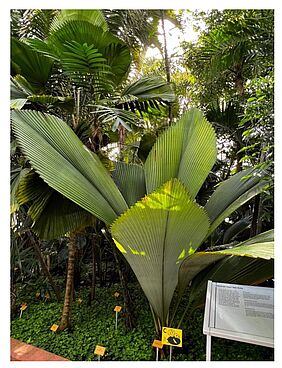Appel à candidature bourse de thèse 2024: sujet 1
Offre de thèse
Homogenization of both linear and nonlinear highly heterogeneous plate for modelling growth of plant
E. Pruchnicki and T. Kanit
Mechanic Unity of Lille Laboratory
University of Lille
Avenue Paul Langevin
F 59655 Villeneuve d’Ascq, France
Dr. E. Pruchnicki : erick.pruchnicki@gmail.com
Pr. T. Kanit : tkanit@univ-lille.fr
In biological systems, ‘growth’ describes the process by which a biological tissue increases (growth) or decreases (atrophy) its body mass or volume. Biological systems are composed of soft material and allow finite strain deformation. Within the framework of nonlinear elasticity, soft materials can be modeled with an incompressible or nearly incompressible hyper elastic constitutive law. We will consider the theory of [1], the geometric deformation tensor is decomposed as the product of a growth tensor (describing the local change of mass or volume) and an elastic tensor. Only the elastic part of the deformation tensor induces stresses. Plants are structure composed of beams, plates and shells (leaves, petal, ….). The internal structure of the microscopic heterogeneous microstructure is given in details in [2-5]. This is show that the transverse dimensions of the thin structure (plate, shell, beam….) is much bigger than the size of the heterogeneities. So, we homogenize first the microstructure heterogeneities by tridimensional homogenization and then we have to apply standard reduction techniques in order to get a model independent of the transverse dimension(s) of the thin structure [6-7]. However, we can find leaves of plant with wavy upper and lower faces of the leaves (modelized as a plate, see figure 1 and 2). The size of the wavy heterogeneities is of the same order of the plate thickness. The full theory can be found in [8-9].
Other works on growth theory can be found in [10-15]. Growth theory can obviously remove, and we obtain a modeling suitable for industrial classical heterogeneous structure. We have
Abaqus, Ansys, Zset and Castem.
Work for this PhD thesis
It relies on numerical implementation and analysis of the result of the theory given previously. However, if numerical problem appears a bibliography study must ne made for solving it.
References
[1] Rodriguez, A.K, Hoger, A, and McCulloch, A. Stress-dependent finite growth in soft elastic tissue. J. Biomech. 1994 ; 27 : 455–467.
[2] Chavarria-Krauser, A, and Ptashnyk, M. Homogenization Approach to Water Transport in Plant Tissues with Periodic Microstructures. Math. Model. Nat. Phenom. 2013; 8(4) : 80–111.
DOI: 10.1051/mmnp/20138406.
[3] Piatnitski, A, and Ptashnyk, M. Homogenization of biomechanical models for plant tissues. Multiscale Model Simulation 2017; 15(1) : 339–387.
[4] Ptashnyk, M, and Seguin, B. Homogenization of a system of elastic and reaction-diffusion equations modelling plant cell wall biomechanics. ESAIM: Mathematical Modelling and Numerical Analysis 2016; 50 : 593–631.
[5] Ptashnyk, M, and Seguin, B. Homogenization of a viscoelastic model for plant cell wall biomechanics. ESAIM: Control, Optimisation and Calculus of Variations. 2017 ; 23 : 1447–1471.
[6] Le Van, A. Nonlinear theory of elastic plates, London, Oxford: Iste Press, Elsevier, 2017.
[7] Dai, H. H, and Song, Z. On a consistent finite-strain plate theory based on 3-D energy
principle. Proceedings of The Royal Society A Mathematical Physical and Engineering Sciences 2014; DOI:10.1098/rspa.2014.0494 (2014)
[8] Pruchnicki, E. Homogenisation of Nonlinear Heterogeneous Thin Plate When the Plate Thickness and In-Plane Heterogeneities are of the Same Order of Magnitude. The Quarterly Journal of Mechanics and Applied Mathematics, 2023 ; 76 (2) : 277–295.
[9] Pruchnicki, E. Homogenization of nonlinear Cosserat plate including growth theory when the thickness of the plate and the size of the in plane heterogeneities are of the same order of magnitude. Submitted to MMS.
[10] Mehta, S, Raju, G, and Saxena, P. Growth induced instabilities in a circular hyperelastic plate. International Journal of Solids and Structures 2021; 226–227.
[11] Wang, J, Steigmann, D, Wang, F.F, and Dai, H.H. On a consistent finite-strain plate theory of growth. Journal of the Mechanics and Physics of Solids 2018; 111 : 184–214.
doi.org/10.1016/j.ijsolstr.2021.03.013
[12] Du, P, Dai, H.H, Wang, J, and Wang, Q.Y. Analytical study on growth-induced bending deformations of multi- layered hyperelastic plates, Int J. Nonlin. Mech 2020, 119 : 103370.
[13] Du, P, Wang, J, Li, Z.F, and Cai, W.C. On a finite-strain plate theory for growth-induced plane-strain deformations and instabilities of multi-layered hyperelastic plates, International Journal of Solids and Structures 2022; 236-237 : 111348.
[14] Du, P., Li, Z., Chen, X., Wang, J. On a general multi-layered hyperelastic plate theory of growth, 2022, Applied Mathematical Modelling. 115, 2023, 300-336.
[15] Wang, J, Wang, Q, Dai, H.H, Du, P, and Chen, D. Shape-programming of hyperelastic plates through differential growth: an analytical approach. Soft Matter 2019 ; 15 (11) : 2391–2399.
